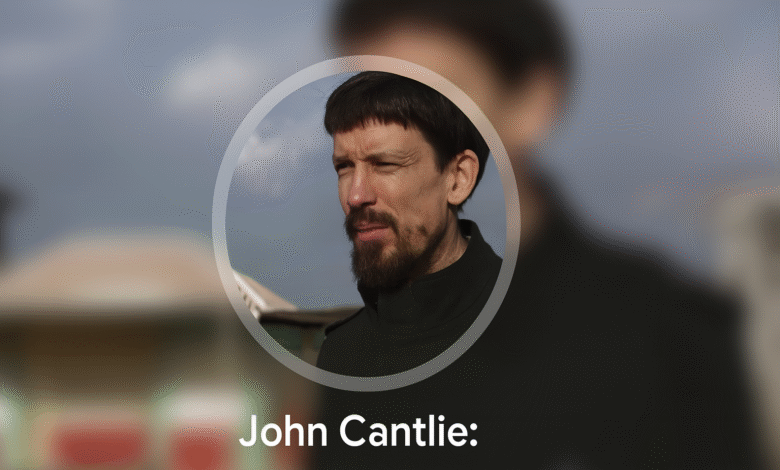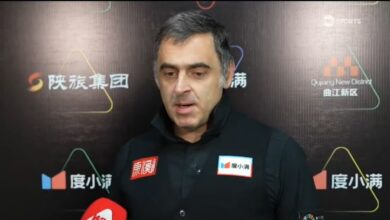John Cantlie: The Journalist Held Captive by History
The extraordinary journey of a war correspondent turned hostage in the heart of global conflict

Introduction
John Cantlie’s name has become synonymous with courage, journalism, and the haunting realities of war. A seasoned British photojournalist, Cantlie entered some of the world’s most dangerous conflict zones not for glory, but to reveal the truth hidden behind frontlines. His work, especially in Syria, shed light on the human cost of war — until he himself became part of the story. Captured twice by extremists, Cantlie’s transformation from frontline reporter to a forced participant in ISIS propaganda is one of the most gripping and tragic tales in modern journalism. His journey is not only a reflection of personal bravery but also a grim reminder of the threats journalists face in pursuit of truth.
Quick Bio
| Full Name | John Henry Cantlie |
|---|---|
| Date of Birth | 7 November 1970 |
| Birthplace | Winchester, Hampshire, England |
| Nationality | British |
| Profession | War Photographer, Journalist |
| Notable Events | Abducted twice in Syria (2012) |
| Status | Missing, presumed dead (as of 2022) |
John Henry Cantlie was born on November 7, 1970, in Winchester, Hampshire, England. Coming from a historically significant family, his great-grandfather Sir James Cantlie once defended Sun Yat-sen, a founding figure of modern China. This heritage seemed to instill in John an unyielding sense of courage and global curiosity.
He began his career in journalism in the early 1990s, writing for gaming magazines before transitioning into the field of war photography and frontline journalism. This leap took him into some of the world’s most dangerous conflict zones, driven by a passion for uncovering stories that many dared not pursue.
From Gaming Pages to War Zones
John’s early journalistic career involved tech and gaming content, notably for Sega Power magazine. However, it was the chaos and raw reality of war that truly captivated him. He ventured into global hotspots, including Afghanistan and the Middle East, eventually becoming known for his powerful photography and frontline reports.
By the 2000s, Cantlie was a respected contributor to leading British newspapers. He reported for The Sunday Times, The Sunday Telegraph, The Sun, and Agence France-Presse, capturing harrowing scenes from war zones. His ability to document human conflict through both words and images marked him as one of the most fearless journalists of his time.
The First Kidnapping in Syria
In March 2012, Cantlie traveled to Syria to cover the growing civil war. On July 19, 2012, while entering Syria illegally from Turkey, he was abducted near Bab al-Hawa along with Dutch journalist Jeroen Oerlemans. During their captivity, Cantlie was shot in the arm while attempting to escape.
The pair were held by militants but were eventually rescued after a week by the Free Syrian Army. This first ordeal didn’t deter Cantlie from returning to the region. Rather, it emphasized his commitment to frontline journalism and truth-seeking, no matter the risk involved.
Second Abduction and Long-Term Captivity
Despite his traumatic experience, Cantlie returned to Syria in November 2012, this time working alongside American journalist James Foley. Tragically, both were kidnapped again near the Turkish border. Foley would later be executed by ISIS in 2014, while Cantlie was held captive for several years.
This time, Cantlie’s captors forced him into a very different role: the face of ISIS propaganda. Unlike other hostages who were executed on camera, Cantlie appeared in a series of controlled video broadcasts delivering ideological messages under duress.
“Lend Me Your Ears”: The Propaganda Series
In September 2014, Cantlie first appeared in the ISIS-produced video series “Lend Me Your Ears.” Wearing an orange jumpsuit, he addressed Western audiences directly, criticizing U.S. and UK foreign policy, and urging reconsideration of media narratives. Six episodes were released in total, clearly filmed under duress.
Following this series, ISIS continued using Cantlie as a propaganda figure. He was later seen in footage from Kobani, Aleppo, and Mosul, styled as a war reporter but clearly operating under coercion. His visible decline in health was a distressing sign of prolonged captivity and psychological pressure.
Final Sightings and Disappearance
The last confirmed video appearance of John Cantlie was in Mosul in December 2016. In this video, he discussed the aftermath of coalition bombings, destroyed infrastructure, and civilian suffering. His frail appearance raised global concern about his wellbeing.
In 2017, some intelligence sources suggested Cantlie may have died in an airstrike. However, UK officials stated in 2019 that he might still be alive based on reports from Syrian Democratic Forces. Despite numerous rumors and hopes, no verified evidence has surfaced since then.
The 2022 Memorial and Family Closure
On the 10th anniversary of his abduction, in November 2022, Cantlie’s family held a private memorial service. Though no body was recovered and no official death certificate issued, the family publicly acknowledged that he was likely no longer alive. This emotional gesture brought a degree of closure to a saga that had gripped journalists, politicians, and humanitarian advocates worldwide.
Cantlie’s father, Paul, had long pleaded for his release before passing away in 2014. The family’s perseverance over the years became a symbol of quiet dignity and hope in the face of extreme adversity.
Career Overview and Contributions
John Cantlie’s journalistic legacy is built not only on his bravery but also on his dedication to truth in the most dangerous settings. His photography captured moments of despair, resilience, and conflict, giving the world a lens into war-torn realities.
He remains the only Western journalist known to have been forced to appear regularly in ISIS propaganda, a distinction both tragic and historically significant. His case is now a subject of study in discussions of war journalism, hostage ethics, and propaganda.
Legacy and Global Reflection
John Cantlie’s legacy is complex yet profound. He is remembered as a symbol of courage, commitment to free journalism, and the sobering cost of bearing witness to global atrocities. International watchdogs, press freedom organizations, and journalism institutes continue to reflect on his contributions and suffering.
His story remains a cautionary tale about the perils of journalism in extremist-controlled regions. It also serves as a testament to the resilience of those who risk their lives in pursuit of truth, no matter how hostile the environment may be.
Conclusion
John Cantlie’s legacy lives on in his work, his resilience, and the unanswered questions that continue to surround his fate. From early reporting assignments to international recognition as a war correspondent, his story evolved into a global symbol of the risks journalists endure. Though he is presumed dead, his life’s work continues to inspire conversations about media freedom, propaganda, and human endurance under captivity. Cantlie stands as a lasting figure of fearless journalism—one who crossed the line between observer and subject, and whose story continues to echo through the corridors of conflict reporting and press freedom advocacy.
Frequently Asked Questions (FAQ)
Who is John Cantlie?
John Cantlie was a British war photographer and journalist who was kidnapped twice in Syria and later held hostage by ISIS.
When was John Cantlie last seen?
He was last seen in a propaganda video filmed in Mosul in December 2016.
Is John Cantlie still alive?
As of 2025, he is officially listed as missing and presumed dead. His family held a memorial in 2022.
Why did ISIS use him in videos?
ISIS used Cantlie to deliver propaganda messages under duress, capitalizing on his credibility as a journalist.
What is John Cantlie’s legacy?
He is remembered for his bravery, commitment to frontline reporting, and as a poignant symbol of the dangers faced by journalists in conflict zones.



